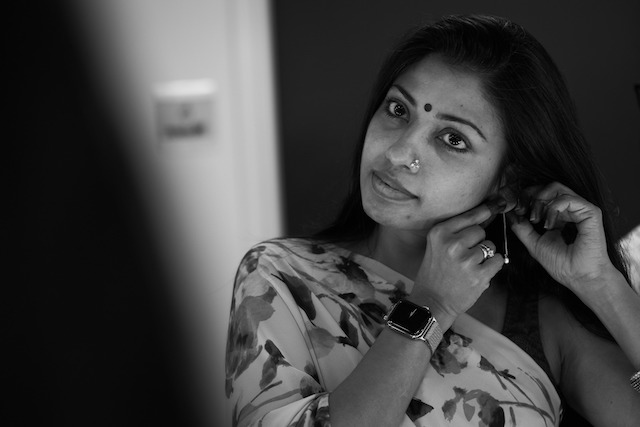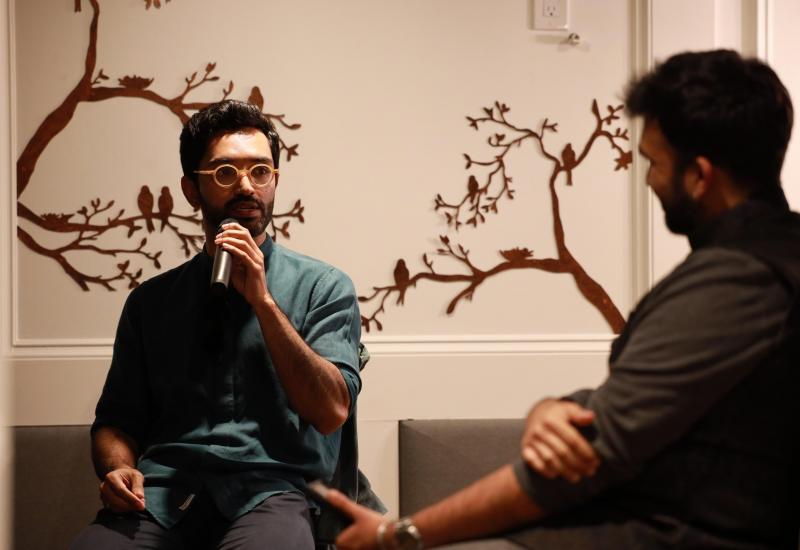When I lied about my caste and other transgressions
Editors' note on the caste system:
The Indian caste system has long been used to entrench the privilege of members of the so-called upper castes while condemning those of lower castes to specific, less desirable roles or occupations. Most definitions of the caste system describe it as dividing Hindus into four main categories, with upper-caste Brahmins at the top, then Kshatriyas (warriors and rulers), Vaishyas (farmers and merchants) and Shudras (labourers). A fifth category falls outside the system and consists of those known as ‘untouchables’ or Dalits; the groups characterized as untouchable were those whose occupations and habits of life involved ritually polluting activities, of which the most important were: taking life for a living, a category that included, for example, fishermen; killing or disposing of dead cattle or working with their hides for a living; pursuing activities that brought the participant into contact with emissions of the human body, a category that included such occupational groups as night soil carriers, sweepers and laundry workers; and eating the flesh of cattle or of domestic pigs and chickens, a category into which most of the indigenous tribes of India fell.
Although the caste system was constitutionally abolished in 1950 and is less obvious today in urban India, where different sections of society live in close proximity and inter-caste marriage is more common, it still persists.
In this article, Prathiba Batley argues that bharatanatyam dance should address this issue head-on.
I recently read a collection of short stories by Baburao Bagul called When I hid my caste: Stories. The collection traces stories of the subjugated Dalit community, their men and their women, the expectations of the upper castes about them, and their livelihoods. If you are interested in social justice, I highly recommend that you read this book.
As I was reading the book, I thought about the times I hid (rather lied about) my caste as a bharatanatyam dancer. That the bharatanatyam world is Brahmin-dominated needs no more evidence than what surrounds us in the field. The practitioners, the audience, and gatekeepers of performance halls in Chennai – the Mecca of bharatanatyam are mostly Brahmins or occasionally of the other upper caste communities. So, growing up as a person of mixed blood the few times I let out my origin I was automatically met with disdain or surreptitious distancing. I was sidelined or completely ignored. People often threw the word ‘tambram’ casually with pride in their conversations (meaning Tamil Brahmin). I soon realized that if I wanted people to truly evaluate my dance skills, I had to hide my identity. I decided to lie. Therefore, at another dance rehearsal when there was talk about caste, I declared that I was an Iyengar (a type of Brahmin). I said this with a little bit of truth thrown in due to my mother’s caste. That day I was met with several questions such as my (maiden) last name which was conspicuously non-Iyengar. I kept building up the lies. As the web of deceit kept spinning, I started feeling increasingly scared that at some point people might figure out my deception upon witnessing my dad’s skin color and accent. Therefore, I used to ask my dad to drop me off a block away on the days he drove me to the rehearsals. Soon I found more acceptance and people praised me for how sharp I was at picking up steps, in my execution, in my musicality, and in my rhythmic skills.
Several months passed and as usual the conversation got back to how ‘us’ tambrams were superior to others. One of my fellow dancers casually let out that I was Iyengar and the singer immediately remarked, ‘Iyengar! You don’t have the beauty of an Iyengar and neither does your mum for that matter.’ Her remarks stung and filled me with shame. I was ashamed of my mixed origin when I should truly have been proud of it. But I was also filled with anger that I had no group I could identify with. Inter-caste marriages were rarer in my parents’ generation than they are today. This led to a certain amount of isolation, but that sense of isolation also led to a lot of introspection. Should we feel superior by being exclusionary or should we feel proud of being inclusive? I realised that my mixed heritage taught me that what we believe and do, such as being kind and compassionate, is what marks our identity, rather than randomly belonging to a group that is solely determined by the roulette wheel of our birth. I decided never to lie about my caste since that day, but it has come at a price.
Enough about me. My purpose in this article is to question why there is still hegemony and caste dominance in bharatanatyam. An acquaintance who claims to be ‘proud of being a Brahmin’ told me that she was not interested in exploring caste issues in bharatanatyam because she does not understand them, and it would be hypocritical of her to speak for Dalits. By this logic only females can be feminists, only blacks can speak about the BLM movement and only rape victims can speak against rape. Are we not made with empathy? Can we not try to understand the sufferings of our fellow humans and do something about it? For how long are we going to keep performing mythological stories that have been done to death in bharatanatyam? Is it not time that we explored more humanistic and real stories? Would we anger the gods by not praising them enough through our dance? Or would we lose their blessings?
Arundhati Roy’s preface to Dr. B.R.Ambedkar’s Annihilation of Caste discusses the story of Surekha Bhotmange, a 40-year-old Dalit woman whose only transgressions were to buy a piece of land and ask for water supply to it. This angered the dominant caste of the region, who after giving her countless troubles, marched to her house and demanded her sons rape her and her daughter. When the sons refused, the mob castrated them. After this Surekha and her daughter were gangraped and the 4 were hacked to death. If you think this story happened in the last century, you would be wrong; this happened in 2009! This is just one example amongst thousands. The statistics about cruelty against the Dalits are staggering. Are we not dancing these stories because we are uncomfortable with the truth or do we not care? How many would even acknowledge that this demonic act took place the way it did? An upper caste professor friend of mine said that the 8-year-old Asifa Bano gangrape case was a figment of the imagination of the opposition parties because Hindus would never rape a Muslim. Of course, showing cute Krishna stealing butter from the maidens is a lot more comfortable than these sordid truths, isn’t it?
We dance about what we prioritise in life. Only through exploration of the lived experiences of others can we truly understand what it is to suffer human rights violations. Change must happen and it must happen at all levels. We need to explore more humanistic stories in bharatanatyam. We should be inclusive of Dalit literature and the stories of other repressed communities. Perhaps by understanding this, at least selfishly as fodder for our performances, we might realize that there are almost no Dalit bharatanatyam artists and question the status quo. Perhaps then we would stop giving excuses that Brahmins work hard and therefore they excel at classical forms (refer to Sudha Raghunathan’s recent interview on why Brahmins dominate the Carnatic music industry or a western parallel where white supremacists express how they perceive African Americans to be lazy)? As a side note another acquaintance of mine said, ‘our community is willing to do the work unlike others.’ Essentially this person feels that the 3% of the population (Brahmins) does more work than the 97% of the population (the non-Brahmins)! Perhaps if we begin this journey of understanding we would try and become kinder and more compassionate?
Commendable work is being done by people such as T.M. Krishna on the Carnatic music side. Unfortunately, when I suggested that we invite Krishna for an interview my Brahmin acquaintance said, ‘He has nothing new to say.’ It is disheartening that the so-called liberal NRI Brahmins sideline his efforts as some one-trick pony while at the root of his efforts lies the desire for humanism, equality, and fraternity in the arts. If you call this desire for egalitarianism and social justice as a one-trick pony, I’d rather be a one-trick pony.
I see the artist as a fighter, passionate about their art and its place in the community. Why can’t these fighting souls lead a revolution in the demolition of caste identities? Why can’t we set an example? On the contrary, currently we are such a bastion of caste supremacy that most of the 97% are disillusioned with and feel excluded by bharatanatyam. Isn’t that shameful? What tradition are we holding on to while these art forms themselves have been appropriated from the Isai Vellalar community by the Brahmins? Even if the tradition involved caste, haven’t we progressed enough to sift the good from the bad practices? Bharatanatyam places importance on bringing a character to life through dance. It requires soul searching; at the heart of this lies empathy. How can one be empathetic when one is exclusive? Thus, by truly becoming inclusive, it is not just the art that can gain visibility, but the dancers who can truly evolve as humans.
References & background reading
B.R. Ambedkar, Annihilation of caste: The annotated critical edition (2016)
Baburao Bagul, When I hid my caste: Stories (translated by Jerry Pinto) (1963)
Sammitha Sreevastha, ‘Classical dance and appropriation’ First Post, December 2019.
Interview with vocalist Sudha Ragunathan: https://youtu.be/Ueu-jMr0eog?t=1301
ABOUT THE AUTHOR
Dr. Prathiba Natesan Batley is a three-time Indian national champion of bharatanatyam. She is the founder of Eyakkam Dance Company that aims to promote social justice and fairness in society and particularly in the practice of dance. Through Eyakkam she seeks to reposition the art form by remaining true to the art and its fundamentals while erasing the hegemonic caste and religious identities that are expected of a dancer. The Tamil word Eyakkam means 'movement', which could refer to a social movement, a musical movement, a political movement, or just a physical movement. Dr. Batley is a professor of statistics and associate dean for faculty excellence at the University of Louisville, KY, USA.




















